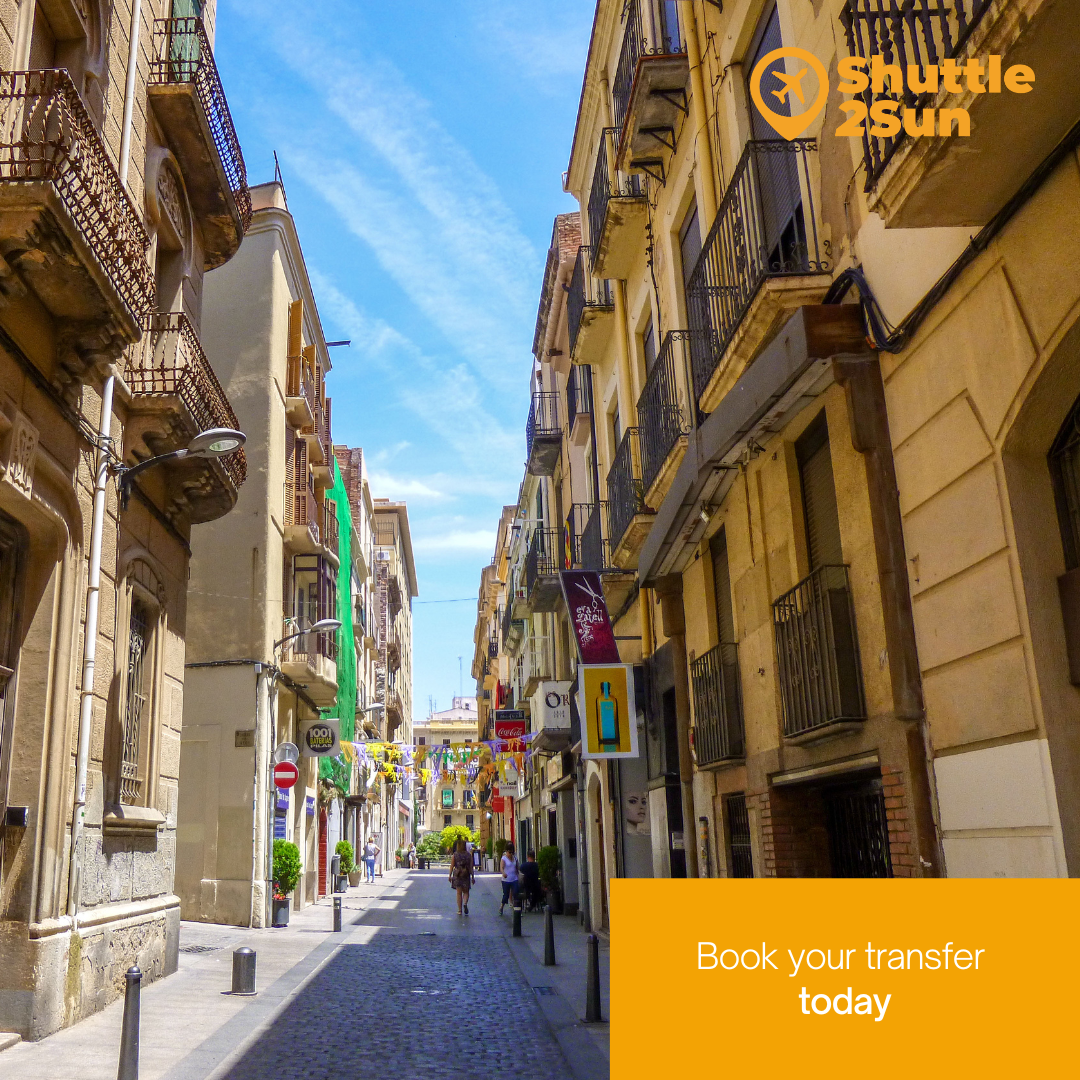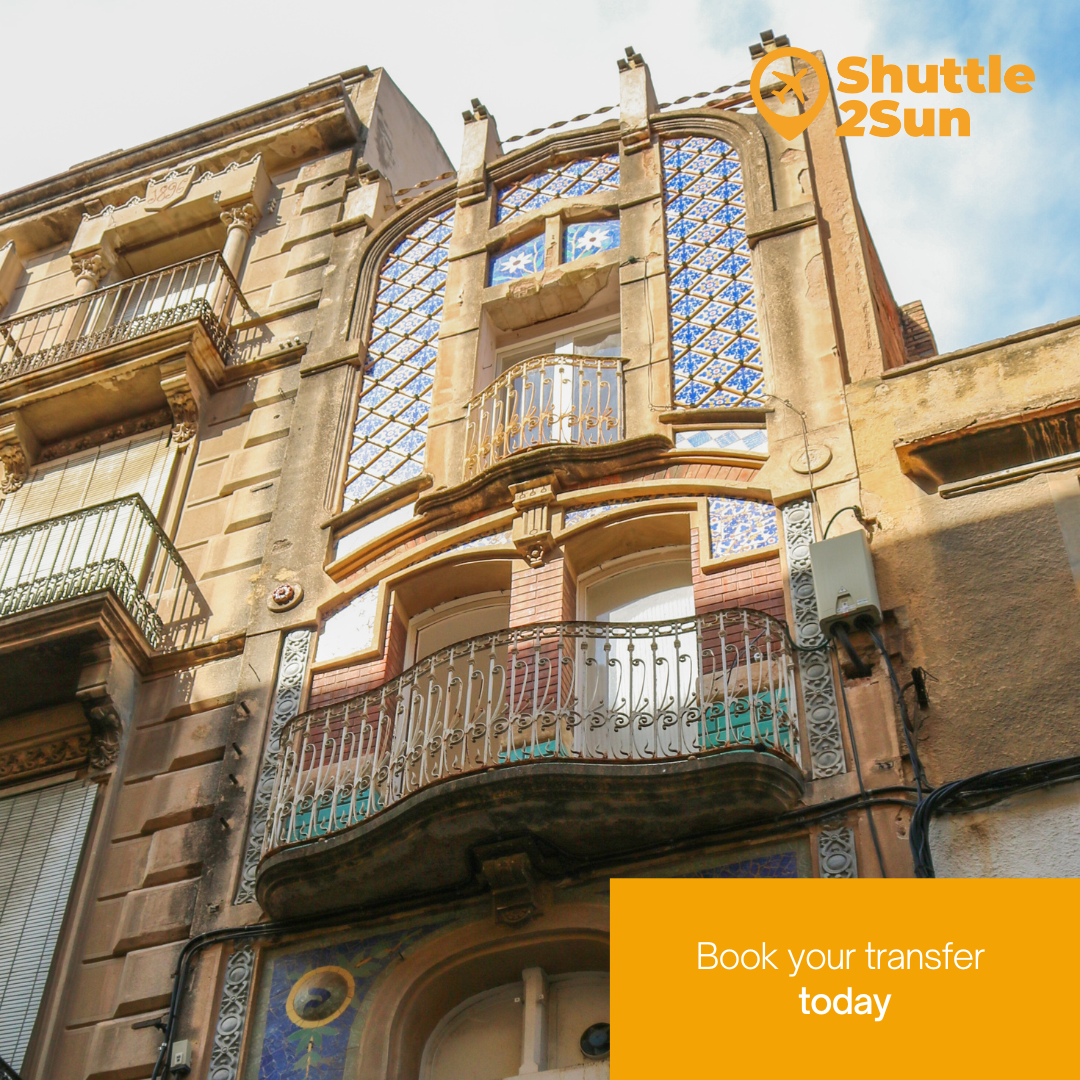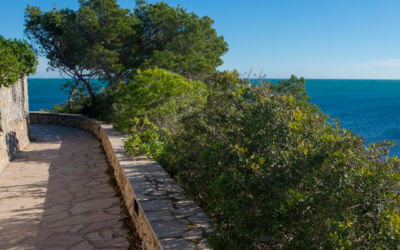Reus, located in the Baix Camp region, is an indisputable reference point for Modernism in Catalonia. This city, where the famous architect Antoni Gaudí lived, has a rich Modernist heritage that attracts thousands of visitors every year. The Modernism Route of Reus allows visitors to explore the influence of this artistic movement through its many emblematic buildings.
Architects such as Lluís Domènech i Montaner, Pere Caselles i Tarrats and Joan Rubió left an indelible mark on the city, creating masterpieces that combine functionality and ornamental beauty, such as Casa Navàs, Casa Serra, Casa Rull and the Pere Mata Institute, among many others.
Below, we will explore the most outstanding buildings that form part of this fascinating route. You can get to Reus from Barcelona airport, Barcelona port, Reus airport, Girona airport and Camp de Tarragona AVE train station with Shuttle2Sun‘s low-cost and sustainable shared transfer services and private transfer services. Remember that you can book your transfer up to 24 hours in advance.
Plaça del Mercadal: Casa Navàs and Gaudí Centre Reus
A good starting point for this route is Plaça del Mercadal, one of the nerve centres of Reus. Of particular note is Casa Navàs, built between 1901 and 1908 by Lluís Domènech i Montaner and the decorator Gaspar Homar, commissioned by the merchant Joaquim Navàs and his wife, Pepa Blasco.
The façade is adorned with a rich decoration of mosaics, stained-glass windows and sculptures, showing an impressive combination of geometric shapes and natural elements. The ground floor of the house was dedicated to a textile shop, which was opened to the public in 1905. It is also worth noting that the entrance to the building has a large mosaic painted by one of the most important post-modernist artists of the time, Joaquim Mir i Trinxet.
The square also houses the Gaudí Centre Reus, an interpretation centre dedicated to Antoni Gaudí. Although he did not build any works in his hometown, his influence is felt throughout the modernist heritage of Reus. The museum offers an in-depth insight into Gaudí’s life and work, using multimedia technologies to create an immersive experience.
Pere Caselles i Tarrats, one of the most prominent artists in Reus
Pere Caselles i Tarrats was a prominent Catalan modernist architect, known for his significant contribution to the architectural heritage of Reus as a municipal architect for four decades, creating more than seventy buildings in the city, ranging from private residences to public buildings.

Some of the most emblematic works are Casa Laguna, built in 1910, in stone and brick; Casa Carpa, known for its innovative design and ornamental details in wrought iron; Casa Querol, rich in sculptural details; as well as Casa Tomás Jordi; Casa Punyed; Casa Grau; Casa Tarrats; Casa Sagarra, with floral and geometric motifs; Casa Munné; Casa Anguera; Casa Homdedéu; Casa Sardà; and Casa Pinyol, among others.
Also worth mentioning are the Oenological Station, on Passeig de Sunyer, one of the architect’s most significant works, inaugurated in 1905 and dedicated to the study and research of wine; the Prat de la Riba Schools, with mosaics by the Barcelona painter and draughtsman, Francesc Labarta, on its exposed brick façade; and the Xavier Amorós Central Library, built by Caselles, together with Francesc Borràs Soler, which was formerly the municipal slaughterhouse.
Casa Serra and Casa Marco, in Raval de Santa Anna
Along the Raval de Santa Anna, you will find two houses that stand out above the rest. On the one hand, Casa Serra, designed by Joan Rubió i Bellver, commissioned by the pharmacist Antoni Serra, is an example of the combination of Modernisme and Gothic elements. Built in 1925, it is notable for its large tribune on the façade and for formerly housing laboratories on the ground floor.
There is also the Casa Marco, the work of Pere Domènech i Roura, son of Domènech i Muntaner, built in 1926. This building is known for its façade decorated with geometric motifs, typical of the Noucentista and Art Deco styles.

Carrer de Sant Joan, the legacy of Lluís Domènech i Montaner
Apart from the Casa Navàs, Lluís Domènech i Montaner has other works in the city of Reus, specifically in Carrer de Sant Joan. Casa Gasull, built in 1911, is a large building consisting of two dwellings, a large warehouse and, in the past, the offices of the family olive oil company.
And the older Casa Rull, dating from 1900, with floral decorations and Gothic-style windows. Today, this building houses the offices of the Culture Department of Reus City Council.
The Pavilion of the Distinguished, at the Pere Mata Institute
The architect Domènech i Montaner also left his mark on the outskirts of the city, with the construction of the Pere Mata Institute, a psychiatric hospital that opened its doors at the end of the 19th century, which is brimming with Modernism in every corner.
One of its areas, known as the Pavilion of the Distinguished, is particularly noteworthy. It was built for the wealthiest families in the area and is currently open to the public for visits.
If you would like to see the inside of this great architectural jewel of Modernism, you can book your ticket in advance.
Other modernist buildings in Reus
In addition to all the works we have explained, you cannot miss Casa Bartolí, located in the Carrer Llovera, a house built by José Lubietas i Ferrater, which is different from the rest because of its motifs that remind us of medieval times. This building was owned by Genaro Bartolí Codina. You can also visit the Anti-Tuberculosis Dispensary, designed by Joan Rubió, which is isolated from the rest of Carrer de Sant Joan by its garden, and which currently houses municipal offices.
The Modernism Route of Reus offers a unique opportunity to explore and admire some of the most emblematic works of Catalan Modernism. Remember that you can get to Reus from Barcelona airport, Barcelona port, Reus airport, Girona airport and Camp de Tarragona AVE train station with Shuttle2Sun‘s shared transfer services and private transfer services. Remember that you can book your transfer up to 24 hours in advance.



